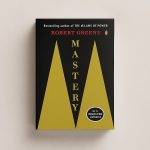The ONE Thing: The Surprisingly Simple Truth About Extraordinary Results by Gary Keller and Jay Papasan delivers a clear and powerful message – success is built on focus, not frantic busyness. Drawing from research, real-life case studies, and practical application, the authors reveal how to cut through distractions, identify the highest-leverage activity, and dedicate your best energy to it. Through concepts like the Focusing Question, purposeful imbalance, and time blocking, The ONE Thing by Gary Keller and Jay Papasan dismantles productivity myths and provides a proven blueprint for achieving more by doing less. It’s an actionable, mindset-shifting guide for anyone committed to creating extraordinary results in work and life.
1. Introduction to The ONE Thing by Gary Keller and Jay Papasan
The ONE Thing: The Surprisingly Simple Truth About Extraordinary Results by Gary Keller (co-founder of Keller Williams Realty) and Jay Papasan is a concise yet far-reaching exploration of how extraordinary success is achieved not through doing everything, but through focusing on the right thing at the right time. The book’s central thesis is disarmingly simple: Find the ONE Thing that matters most in any given project, day, or life stage, and devote yourself completely to it.
The authors assert that success is not about endless productivity hacks or mastering multitasking – both of which often lead to burnout and shallow results – but about applying focused energy to the high-impact lead domino that will make everything else easier or unnecessary.
The strength of The ONE Thing by Gary Keller and Jay Papasan lies in its synthesis of research from productivity science, time management, willpower psychology, and case studies from sports, business, and personal development. It distills these into a repeatable framework that applies to any endeavor, from corporate strategy to personal goals like health, learning, or relationships.
2. Author Biographies
Gary Keller
Gary Keller is an American entrepreneur, real estate expert, and best-selling author. In 1983, he co-founded Keller Williams Realty International, which has grown into the largest real estate company in agent count in the world. Keller’s background is deeply rooted in coaching and business leadership, and he is known for his ability to translate complex business principles into actionable steps. His earlier books, including The Millionaire Real Estate Agent and The Millionaire Real Estate Investor, established him as a thought leader in personal and financial achievement.
Jay Papasan
Jay Papasan is an author and executive at Keller Williams Realty who specializes in business writing and communications. Before joining Keller Williams, Papasan worked as an editor at HarperCollins Publishers. His expertise lies in clarifying complex ideas, making them accessible and implementable for readers. Papasan’s partnership with Keller combines visionary insight with structured, reader-centric narrative execution.
3. Core Thesis and Framework
The book’s central idea can be condensed into this focusing question:
“What’s the ONE Thing I can do such that by doing it everything else will be easier or unnecessary?”
From this, Keller and Papasan build a practical productivity philosophy anchored in three premises:
Going Small: Extraordinary results require narrowing your focus to the most impactful task or goal.
The Domino Effect: Small, focused actions build momentum that topples increasingly larger challenges.
Success Is Sequential, Not Simultaneous: The journey to mastery is built one high-priority action at a time, not through doing multiple big things all at once.
The authors dismantle common myths (“lies”) that derail focus and present a roadmap called “The Truth,” followed by the application phase, “Extraordinary Results.”
4. Structure Overview
The ONE Thing by Gary Keller and Jay Papasan is divided into three main parts:
Part One: The Lies – They Mislead and Derail Us
Here, the authors identify six pervasive myths in productivity culture:
- Everything Matters Equally
- Multitasking
- A Disciplined Life
- Willpower Is Always on Will-Call
- A Balanced Life
- Big Is Bad
Each “lie” is deconstructed with evidence showing why it detracts from significant progress and focus.
Part Two: The Truth – The Simple Path to Productivity
This section introduces the “Focusing Question” and shows how to shape habits of consistent prioritization.
Chapters include:
– The Focusing Question
– The Success Habit
– The Path to Great Answers
Part Three: Extraordinary Results – Unlocking the Possibilities Within You
This part translates the earlier principles into actionable steps for living with purpose, priority, and productivity, concluding with implementing three commitments, recognizing four “thieves” of productivity, and embarking on “The Journey.”
5. Detailed Synthesis and Key Concepts
Part One: The Lies
Everything Matters Equally: Keller and Papasan argue that the “to-do list” culture often blinds people to the reality that only a few tasks produce the majority of results (echoing the Pareto Principle, or 80/20 rule). Success requires identifying and elevating the vital few tasks, discarding or delegating the rest.
Example: In sales, a handful of core clients may drive most revenue; excessive attention to low-value prospects dilutes overall outcomes.
Multitasking: Multitasking is exposed as a productivity killer. Neuroscience demonstrates that what we call multitasking is actually task-switching, leading to cognitive residue, slower thinking, and more mistakes. At work, this leakage can cost up to 28% of a workday.
A Disciplined Life: Contrary to the belief that successful people live highly regimented lives, the authors note that success comes from focusing discipline long enough to develop a habit. Once habits are established (such as daily writing or sales calls), less discipline is needed to maintain them.
Willpower Is Always on Will-Call: Willpower is a finite resource that depletes over the day. Tackling your most important ONE Thing during your “peak energy hours” is essential.
A Balanced Life: Perfect balance is a myth. Extraordinary achievement often requires purposeful imbalance – devoting disproportionate time to the most important area during critical moments, then counterbalancing later.
Big Is Bad: Dreaming big is not only good but necessary. Fear of big goals can lead to mediocrity. Big thinking inspires big action and innovation.
Part Two: The Truth
The Focusing Question
The authors introduce the book’s MVP concept:
What’s the ONE Thing I can do such that by doing it everything else will be easier or unnecessary?
This question is designed to help identify the highest-leverage activity in any context – from yearly planning down to a moment-by-moment choice.
They propose using sub-variations:
– For long-term vision: “What’s the ONE thing I can do this year…?”
– For immediate action: “What’s the ONE thing I can do right now…?”
The Success Habit
By repeatedly asking and acting on the focusing question, you develop a success habit – a reflex to identify priority before action.
The Path to Great Answers
Great questions demand great answers, which require:
– A specific goal or standard.
– A stretch into the realm of big.
– A plan informed by research, models, and mentorship.
Part Three: Extraordinary Results
Live with Purpose
Purpose fuels persistence. The authors argue that clarity about your “why” creates energy, resilience, and guidance in decision-making.
Live by Priority
The key is translating purpose into priority – the most immediate action that aligns with your big goals.
Live for Productivity
Productivity is a function of time blocking. The authors recommend:
- Blocking time for your ONE Thing daily.
- Blocking time for planning.
- Blocking time for rest and recreation.
The Three Commitments
- Follow the path of mastery – continuous improvement in your ONE Thing.
- Seek the best methods and models.
- Commit to being “accountable” – accepting responsibility for results.
The Four Thieves of Productivity
- Inability to say “no.”
- Fear of chaos (accept that some areas will be temporarily neglected).
- Poor health habits.
- Unsupportive environment.
The Journey
Success isn’t a one-time achievement but a daily commitment to alignment between your purpose, your priorities, and your actions.
6. Integration with Broader Context and Related Research
The ONE Thing by Gary Keller and Jay Papasan ’s principles draw from:
– The Pareto Principle (Vilfredo Pareto’s economic observations, now widely applied to business productivity).
– Deliberate Practice (Anders Ericsson’s work on skill acquisition).
– Habit Formation research (Charles Duhigg’s The Power of Habit).
– Time Blocking Techniques (Cal Newport’s deep work philosophy).
It resonates with ideas in:
– Essentialism by Greg McKeown – “Less but better.”
– Deep Work by Cal Newport – Single-minded focus on cognitively demanding tasks.
– The 4-Hour Workweek by Tim Ferriss – Efficiency over busyness.
7. Practical Applications
– Business Strategy: Identify the one strategic initiative that would make the greatest market impact.
– Personal Finance: Focus on one key wealth-building habit (e.g., consistent saving or investing).
– Health: Adopt one foundational change (e.g., daily exercise) that cascades into other positive behaviors.
– Learning: Prioritize one skill that opens the door to many others.
8. Critiques and Counterpoints
– Over-Simplification Risk: Critics point out that while focusing on one thing is powerful, life’s complexity sometimes necessitates parallel progress in multiple areas.
– Narrowing Too Much: Excessive focus could lead to neglect in crucial but less urgent domains (e.g., relationships, health while pursuing career goals).
– Personality Fit: Highly creative or multi-passionate individuals may find it challenging to commit to a singular focus without feeling constrained.
Nonetheless, the book’s applicability to almost any goal makes it enduringly relevant.
9. Enduring Value
More than a productivity manual, The ONE Thing is a mindset shift. It challenges the glorification of “busy” and replaces it with “effective.” Its main value lies in making people confront the real trade-offs between action quantity and action quality.
It invites a lifelong discipline: continually identifying and acting on the most important, high-leverage activity that will create disproportionate results.
10. Conclusion: The ONE Thing by Gary Keller and Jay Papasan
The ONE Thing by Gary Keller and Jay Papasan offers a deceptively simple, research-backed formula for achieving more by doing less – selectively. It dismantles modern myths about productivity, replaces them with clear focusing principles, and delivers a toolkit that is immediately actionable.
By internalizing the Focusing Question, applying time blocking, and embracing purposeful imbalance, readers can achieve extraordinary results without sacrificing mental health or purpose along the way.
In the end, the book’s promise is well grounded: when you find and act on your true ONE Thing, everything else truly does become easier or unnecessary.
If you found this summary helpful, please share it or leave a comment below.











